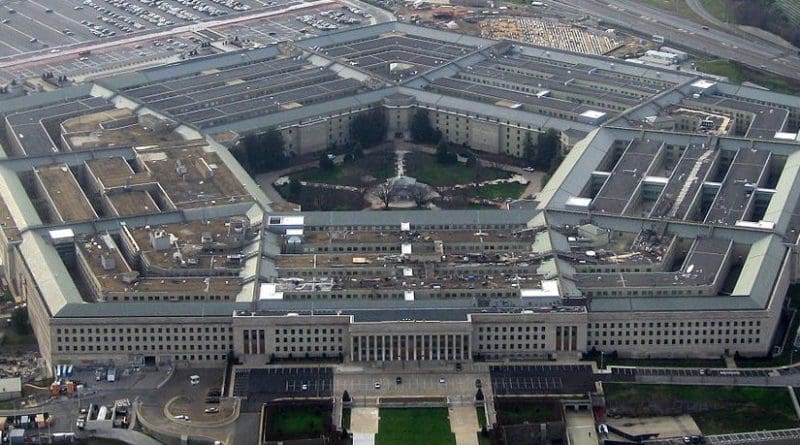Socom Commander Outlines People, Mission, Equipment
By DoD News
He explained that early in post-9/11 military operations, the emphasis was on rapid action. “There was an awful lot of firing that occurred quickly. … We made rapid decisions to provide rapid capability,” he said. “Now over the last couple, three years, we’ve been able to adjust fire to make sure that we are really delivering the right things to the right people.”
U.S. Special Operations Command has filled its barracks and motor pools over recent years to meet this decade’s demands for its forces, the command’s top officer said yesterday.
Speaking at the National Defense Industrial Association’s 22nd Annual Special Operations and Low-intensity Conflict Symposium, Navy Adm. Eric T. Olson, Socom commander, offered what he called a snapshot view of current special operations missions, people and equipment.
“We are 85 percent, approximately, deployed into the Central Command area of operation. It’s been that way now for about seven years,” he said. “We are struggling mightily to meet the increase in demand from the other geographic combatant commanders of the world, spreading the other 15 percent of our deployed force across [their areas].”
Most significant current threats are “emanating from or being cultivated” in the Central Command area, Olson said.
In terms of people, Socom has swelled its ranks significantly in the last few years, he said, noting current strength across the “many tribes” of the community is about 60,000.
“I would say roughly about a third of those are the operators, if you will, of the special operations community,” he said.
The operators have volunteered, been selected for, and gone through “some sort of an advanced training” –- such as the Army Special Forces Qualification Course or the Navy Basic Underwater Demolition SEAL training –- that earns them a special operations identifier, Olson said. Those operators include air crews, aviators and ground and maritime forces, he said.
“About two-thirds of the force, then, cycles through the special operations community for a tour or two or three, over the course of their career,” Olson said.
The overall special operations force is about half Army, followed in decreasing percentages by the Air Force, Navy and Marine Corps, the admiral said.
The special operations community was established in 1987, and became fully joint when U.S. Marine Corps Forces Special Operations Command stood up five years ago this week, Olson told the group.
“They are performing magnificently,” he said. “Most of our deployed Marine special operators are now in western Afghanistan, where they are now on their second consecutive O-5 level special operations task force deployment,” he said.
Socom is now made up of about 80 percent active-duty troops, an increase from four years ago when active-duty troops made up two-thirds to three-quarters of the command, he said.
Special operators are carefully selected and highly trained, the admiral said, but it’s their weapons, vehicles and other equipment that enable them to fight, survive and achieve mission success. Socom has seen a “significant couple of years” in equipment gains, Olson noted, citing the MC-130 Whiskey Dragon Spear aircraft as a notable example.
Although it has a gun, he said, the MC-130 isn’t a gunship.
“It is an airborne precision-fire platform … [with] a robust sensor,” Olson said. “Unlike the AC-130 gunships that many of you are familiar with, the MC-130 Whiskey can fly in the daytime … at standoff distance. So this has been enormously valuable for the force.”
The MC-130 project progressed from imagination to flight in less than 90 days, and it deployed in 18 months, the admiral added.
Socom developed the MC-130 under its own authorities, Olson said. “We formed a joint acquisition task force … [and] grabbed control of this project,” he added.
The MC-130 first deployed to Iraq and now is in Afghanistan, the admiral said.
Other equipment advances fielded or in development include “high beam,” an airborne-mounted, overt laser that illuminates a spot on the ground, Olson said, noting that operational commanders are “finding more and more uses for an illuminated spot on the ground.” The technology can prevent inadvertent attacks on friendly forces, and it can illuminate targets, inducing a “powerful psychological effect,” he explained.
Socom has increased its aircraft inventory with single- and twin-engine turboprop planes able to move small amounts of people and cargo in remote locations with rudimentary landing areas, Olson said. The command also has acquired more helicopters, incorporating a company of Black Hawks and planning for a company of Chinooks, he added.
The command’s intelligence, surveillance and reconnaissance capabilities using manned and unmanned aircraft also are more robust now, Olson said, proving to be enormously important on the battlefield.
“In the areas of mission, people and stuff, there’s been a significant expansion, particularly over the last couple of years,” he said. “We’ve called it, frankly, inside Special Operations Command, the third stage of ‘Ready, fire, aim.’”

